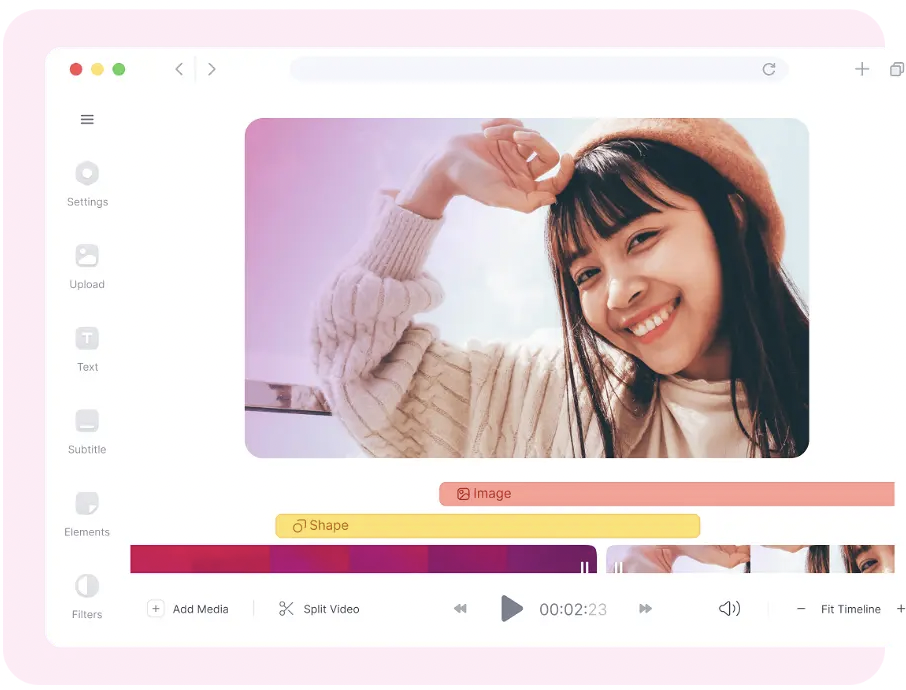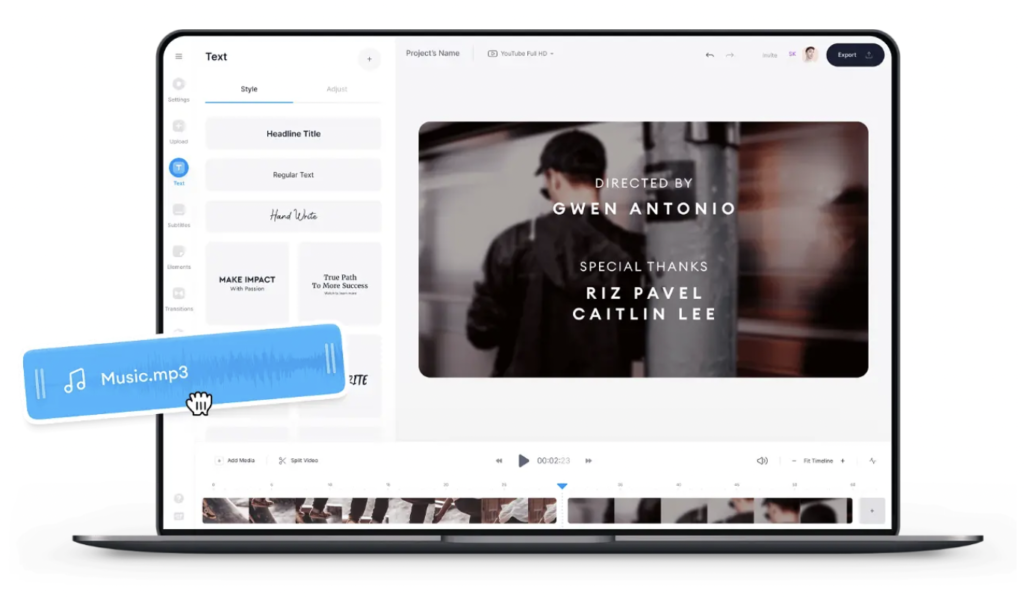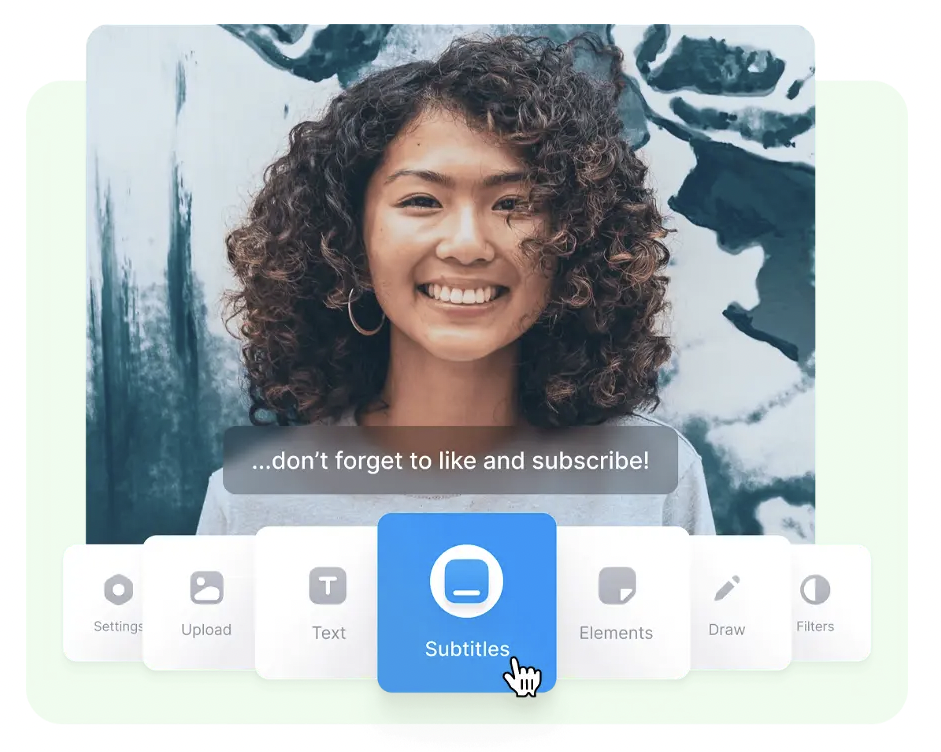Video intros and outros are extremely important. They can make or break a video and they are often overlooked. The first 5 seconds of your video is all that some viewers will see, so it’s important to make an impact right away. A good intro can also help create anticipation for what is about to happen in the video and build the viewer’s interest in what you have to say.

Photos credit: VEED.IO
Video intros and outros are crucial elements in creating engaging and effective video content. Intros can capture the attention of viewers, establish the tone of the video, and provide context for the content. They can also showcase branding elements and help to establish brand recognition. Outros, on the other hand, can pique your viewers’ interest—making them look forward to your next videos.
In this article, we will discuss the techniques for creating engaging and effective video intros and outros:
A. Techniques for Creating Engaging Video Intros

- Keep it short and sweet. Intros should be kept short and sweet, ideally lasting no longer than 15 seconds. This helps to keep viewers’ attention as they watch your video and may also help them decide whether or not to click away. You can use this time to introduce yourself, offer a brief overview of what you will be discussing in the video, and/or grab your audience’s attention with an interesting fact or statistic.
- Use attention-grabbing visuals and music. One way to make your intro more engaging is by using attention-grabbing visuals and music. You can do this by using an interesting photo or video clip as a backdrop, having one of your employees speak in the video, or showing some statistics related to the topic at hand. Music can also be used to set the tone for your video and may help viewers get excited about what they are about to watch.
- Introduce the topic or theme of the video. After you have grabbed your audience’s attention with an engaging intro, it is time to introduce the topic or theme of the video. This can be done by stating a problem that needs solving, explaining why it is important for people to know about this issue, or sharing some research findings related to the subject.
- Use humor or a personal touch to connect with viewers. Humor is a great way to connect with your audience and help them relate to you. In addition, it can make a video more entertaining and memorable. You could tell a funny story or joke related to what you are talking about, share some personal experiences that relate to the topic, or create a humorous skit that demonstrates an important point.
- Include a call-to-action. A call-to-action (CTA) is a statement that tells viewers what action you want them to take after watching your video. It can be as simple as “share this with your friends” or “sign up for our newsletter”. If you have more than one CTA, consider putting the most important one at the end of your video so people will remember it when they watch.
B. Techniques for Creating Effective Video Outros

- Summarize the main points of the video. When the video is over, your viewers will probably be thinking about what they just watched. Summarize the main points of your video in a few sentences and tell them why those points are important. Ask viewers to share their opinions on the subject. This can be a powerful way to start a conversation about something that matters deeply to you or your audience.
- Provide additional resources or related content. If you’re creating a video about a specific topic, it’s likely that there are other videos or content related to that subject. You can provide links to additional resources in your outro. This not only shows viewers that you care about providing them with more information but also gives them the opportunity to learn more if they want to.
- Include a call-to-action, such as subscribing to the channel or visiting a website. This is a great way to get viewers to engage with your content in some way. You could ask them to comment on the video or share it with others. If you’re trying to build subscribers, ask people to subscribe and then offer them a reward for doing so.
- Use a strong visual or musical ending to leave a lasting impression. This could be a simple fade or other visual effect or a song that plays as you conclude your video. You may also want to include a short final message thanking viewers for watching and encouraging them to share their thoughts on the content.
- Encourage viewers to engage with the content or leave feedback. The best way to get feedback is to ask for it. If you want viewers to share their thoughts on your video, ask them in the description or at the end of the video. You can also include a poll that allows viewers to vote on certain topics related to your content.
C. Best Practices for Creating Video Intros and Outros

- Keep branding consistent. You want viewers to associate your brand with the content you create. The same goes for your intros and outros. If you have a specific logo or branding style, use it consistently across all of your videos. Keep it short and sweet. People don’t watch video intros because they’re interested in hearing about who made them or who owns the channel—they watch because they want to see what happens next.
- Test different techniques to see what works best for your audience. While you may have a specific brand or style that you want to use for your intros and outros, it’s important to test different techniques. You can use variations on length, voice tone, and speed, as well as graphics and animation. Try different things until you find what works best for your audience.
- Use high-quality visuals and audio. High-quality visuals and audio are key. Your intros should be visually appealing and engaging, while your outros should provide a smooth transition between the video and credits. If you have the ability to create your own graphics or animations, make sure that they’re top-notch—don’t settle for mediocre quality just because you want to save time. If you don’t have the skills to make your own graphics, hire someone who does! Or you can get help from an online video editor such as VEED.IO. With its easy-to-use features—such as audio joiner, converting MP3 to WAV formats, and many more—you are sure enough that you will never go wrong in creating great videos.
- Think about the overall flow and pacing of the video. You want to make sure that the video flows smoothly and doesn’t feel choppy or disjointed. Make sure you don’t over-edit or cut too many times—it can be hard for viewers to keep up with what’s going on if you change scenes too often. Focus on one topic at a time, and try not to jump around from one thing to another without any transition between them (unless it serves some purpose).
- Don’t be afraid to experiment and try new things. If you have a few ideas that are similar, try them out and see which one works best. You can always go back later and edit the footage together into one video if it doesn’t work out!
In conclusion, creating engaging and effective video intros and outros is an important aspect of producing high-quality video content. By using attention-grabbing visuals and music, introducing the topic or theme of the video, and including calls-to-action, intros can help to attract and retain viewers and establish brand recognition.
Outros can be used to summarize the main points of the video, provide additional resources, and encourage engagement with the content. It’s important to keep branding consistent, test different techniques, and use high-quality visuals and audio.
By incorporating these techniques into your videos, you can improve the overall quality of your content and make it more appealing to viewers. With dedication and creativity, anyone can create engaging and effective video intros and outros that capture the attention of viewers and help to achieve success on video platforms such as YouTube.





